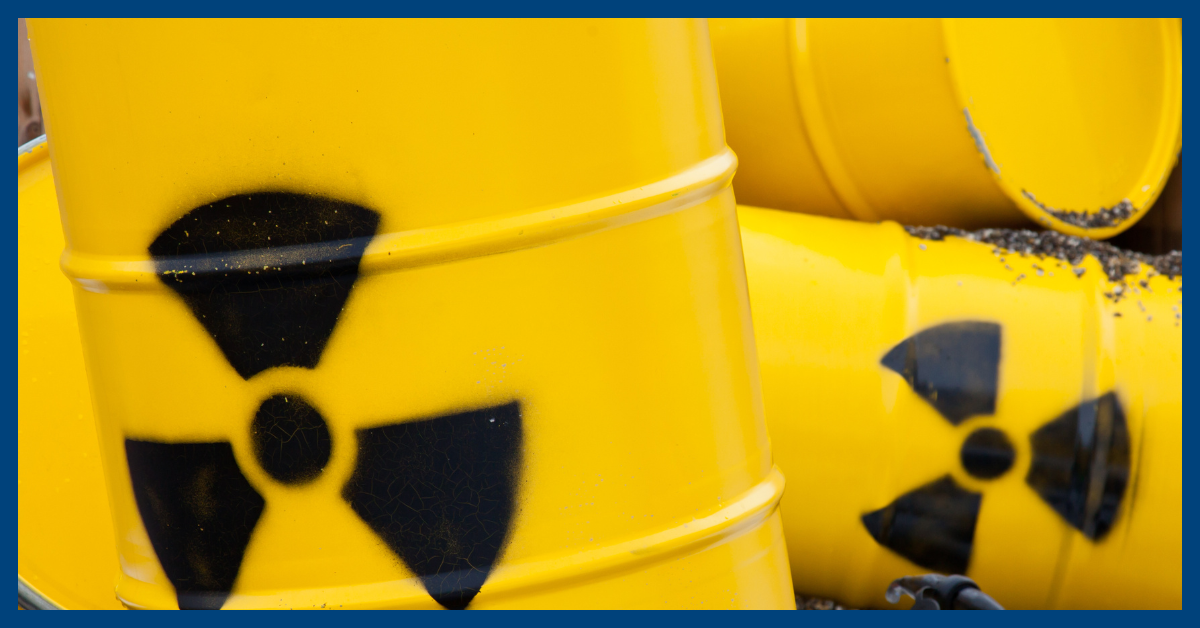
2 Major Nuclear Plant Accidents and How They Relate to Operator Training
For society to benefit from complex technology requires sound engineering. Well-designed, timely and challenging nuclear plant training for those who operate and maintain the technology is just as important. History has shown that catastrophic events, such as nuclear plant accidents, often includes a human element.
Here are two well known examples where nuclear plant training did not adequately prepare operators for the major accidents they faced.

Nuclear Plant Accident #1: Three Mile Island (TMI) – 1979

A combination of personnel error, design deficiencies, and component failures caused the TMI nuclear plant accident, which permanently changed the nuclear industry. Public trust in nuclear power suffered. Regulatory and industry oversight of plant operations became broader and more intrusive.
The nuclear plant accident began about 4 a.m. on March 28, 1979, when Unit 2 experienced a failure in the secondary side of the plant. Numerous alarms and warning lights made diagnosing what was happening difficult, and the operators did not realize that the nuclear plant was experiencing a loss-of-coolant accident.
The nuclear plant staff assumed that instruments showing the pressurizer water level was high enough meant the core was covered with water. But it wasn’t. The staff were unaware of an open relief valve and unable to tell if the core was covered with cooling water, and took actions that uncovered the core and the core overheated.
After analyzing the nuclear power plant accident, permanent and broad changes across how the nuclear industry is regulated were implement. One of the major changes since the accident identified the critical role of human performance in plant safety and led to revamping operator training and staffing requirements.
Training reforms are among the most significant outcomes of the TMI-2 accident. Training now gives nuclear plant operators a foundation for understanding both theoretical and practical aspects of plant operations.

Nuclear Plant Accident #2: Chernobyl – 1986
The Chernobyl Nuclear Plant Accident in 1986 was the result of a flawed reactor design that was operated with inadequately trained personnel. The resulting steam explosion destroyed the reactor and released at least 5% of the radioactive reactor core into the atmosphere.
Two Chernobyl plant workers died on the night of the accident. Another 28 people died within a few weeks as a result of acute radiation poisoning. After the nuclear plant accident, over 300,000 people in neighboring cities were relocated from their homes.
On April 25, 1986 prior to a routine shutdown, the reactor crew at Chernobyl 4 began preparing for a test to determine how long turbines would supply power to cooling systems following a loss of normal electrical power.
Operators conducting the test disabled automatic shutdown systems prior to starting the test. Testing was delayed which caused the reactor to became unstable. When the operators finally initiated a reactor shutdown, it was in an extremely unstable condition. The control rods had a design flaw which rapidly increased power as they were inserted into the core.This flaw caused a massive explosion and fire. The operators had not been trained on the safety significance of this design flaw or the reactor physics, which made low power operation extremely hazardous.

Industrial Accident: Air France Flight 447 – 2009
In June 2009, Air France 447 took off from Rio de Janeiro Brazil for a routine overnight flight to Paris. The flight carried three pilots, 9 cabin attendants and 216 passengers. At midflight, 35,000 feet above the Atlantic Ocean, the aircraft encountered light turbulence.
The pilots maneuvered to find a smoother ride but, airspeed inputs were lost. The Airspeed inputs were lost due to icing and resulted in erroneous indications in the cockpit. The autopilot unexpectedly disengaged, startling the crew. The flight’s crew did not understand the situation, ignored warnings that the aircraft was stalling, and took incorrect action. The pilots were confused and lost control of the aircraft. With the plane pitched up to greater than 35 degrees, it stalled and plummeted downwards at 10,000 feet per minute. The plane crashed into the ocean, killing all 228 people on board.
The accident (although not a nuclear plant accident) investigation found significant deficiencies in pilot training. Simulator sessions followed familiar scenarios, and the trainees anticipated the failures they would have to deal with. Training scenarios lacked the challenge and stress of an in-flight failure and did not develop skills necessary to manage an unexpected situation and to work as a team.
The blockage of the airspeed sensors by ice crystals caused the loss of speed indication and was a recognized but abnormal condition. After immediate actions using basic airmanship, the team expected the failure would be rapidly diagnosed by pilots and managed using the applicable flight procedure. The Air France 447 crew likely never understood that it was faced with a “simple” loss of three sources of airspeed information.
Conclusion
In summary, training fell short in preparing the operators for situations they faced in the examples above. The consequences resulted in significant improvements in training, less fatalities, and dramatic changes in the industry.
In the three events, high-quality, challenging training that developed the needed knowledge and skills could have prevented catastrophic results. Whether you’re a line manager, operator or trainer there’s one good question to ask. “How does training continually improve our people” ?
Not satisfied with the answer? Accelerant Solutions has the expertise and products to help.
Sources:
- Bureau d’Enquêtes et d’Analyses (BEA) “Air France flight 447 Final Report”, July 2012



Bob Ciminel
March 6, 2020Very good examples of how training is so important to accident prevention and mitigation, something sorely lacking in the two fatal 737 Max accidents. Automation without extensive training of personnel in how to cope when a system fails is a road to ruin.
Jason Smith
March 6, 2020Agreed Bob, interesting how much overlap there is in the commercial airline and nuclear industry when it comes to the importance of training isn’t it?